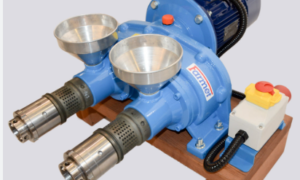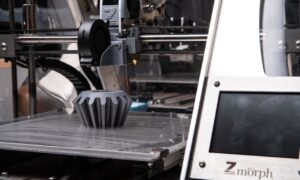As COVID-19 puts new strain on hospitals around the world, stockpiles of essential medical equipment are beginning to dwindle. There have been reports of doctors working with improvised PPE and breathing equipment, as well as ICUs with too few ventilators.
While factories have been ramping up production of medical equipment, medical device manufacturers have struggled to meet the sudden surge of demand. These companies have been swamped by new requests — and while major manufacturers like Ford and General Motors are beginning to retool factories to produce needed medical equipment, it’s likely that these production lines won’t be up to speed for a while.
Hospitals around the world have been looking for alternatives. Now, 3D printing companies are rising to the challenge and using 3D printing tech to manufacture medical equipment.
3D Printing Companies Pivot to Creating Medical Equipment
Isinnova, an Italian 3D printing company, made headlines in early March when the company responded to a hospital’s request for replacement oxygen valves. The hospital had begun running out of the valves while treating patients sick with COVID-19. Hospital staff had already reached out to their usual supplier, but were told that the company couldn’t manufacture the valves in time to treat the patients.
Isinnova stepped up to the challenge. With 3D printer, the company was able to produce more than 100 respirator valves within 24 hours — and at a fraction of the typical manufacturing cost.
The project was exciting for many in the medical community and 3D printing industry. It demonstrated how the fast turnaround of 3D printed devices could be used to quickly and effectively manage supply shortages at individual hospitals, which often need smaller batches of medical equipment on a short timescale.
Since that success, a number of hospitals around the world have begun working with 3D printing companies to rapidly manufacture critical medical equipment.
For example, the 3D printing company Formlabs shifted from manufacturing dental equipment to creating swabs for COVID-19 test kits.
The swabs are part of a new testing kit design created by medical researches at Northwell Health. The hospital system, not wanting to wait for testing kits to arrive, developed a new type of swab that could be created by 3D printers. The swabs are made out of an FDA-approved plastic resin — and unlike swabs that use cotton or wood, they don’t alter the genetic composition of collected sample cells. This helps to ensure the most accurate test results possible.
With Formlabs’ current production capacity, it will soon be able to create 100,000 swabs every day.
In Paris, medical organizations have gone even further, and are installing 3D printers directly in hospitals impacted by the surge of COVID-19 patients. The AP-HP, the university hospital trust of Paris purchased 60 3D printers that will soon be used to create a variety of medical equipment, including rigid face masks, syringe plungers and intubation and ventilator equipment.
Challenges Facing 3D Printed Medical Equipment
Despite the successes of 3D-printed medical equipment, however, the manufacturing method faces some steep challenges.
While 3D printing can produce a wide range of medical equipment, they can’t manufacture complicated machines like ventilators. Some equipment needs will have to be met by traditional manufacturing methods.
Certain polymers and materials commonly used in 3D printing also aren’t suitable for medical devices, which often need to be carefully designed for exposure to biological materials. Some common polymers can also break down with repeated sterilization and sanitation. For some 3D printing materials, something as simple as repeated exposure to mild disinfectant can be enough to cause the polymers to break down.
Right now, medical professionals and hospital sanitation staff are taking equipment sanitation very seriously. If a 3D printed device isn’t made from a polymer that can stand up to heat-based sterilization or harsh cleaning chemicals, it likely won’t last very long in a hospital treating COVID-19 patients.
3D Printing May Help Hospitals Manage the COVID-19 Equipment Shortage
The current supply shortages caused by COVID-19 are likely to last well into the future as hospitals continue to struggle with high numbers of patients sick with the virus. While major manufacturers are working to meet new demand for medical equipment, they have been slow to ramp up production — leaving many doctors and nurses without the equipment they need to treat patients.
3D printing may be able to mitigate the worst of these shortages. Hospitals around the world have already had success with using 3D-printed face masks and medical equipment, like oxygen valves. However, any 3D printing company that wants to pivot to medical device manufacturing will need to be aware of challenges that they’ll face — like designing equipment that can stand up to intense sanitation procedures.



































